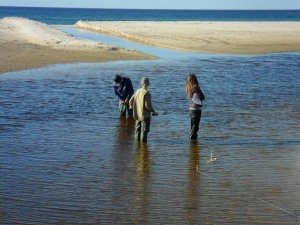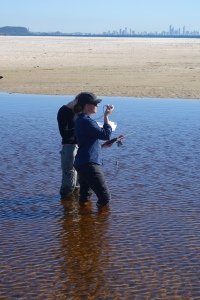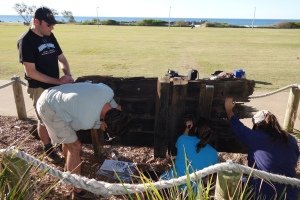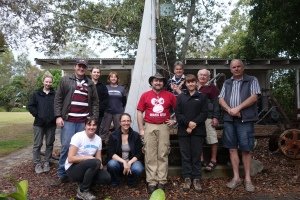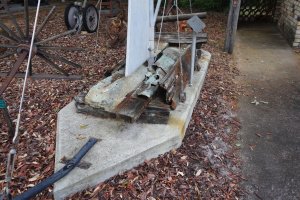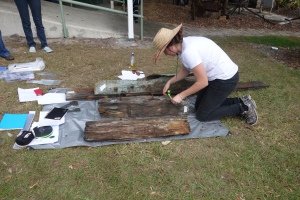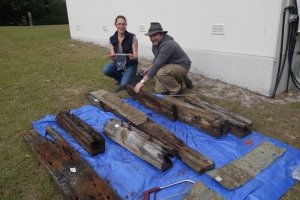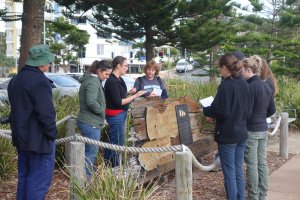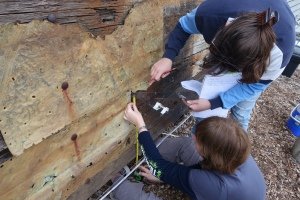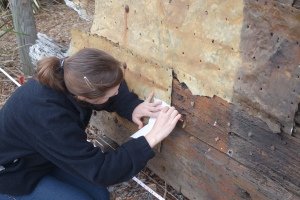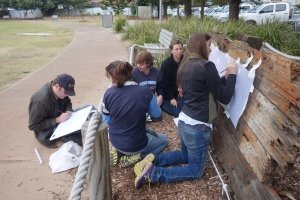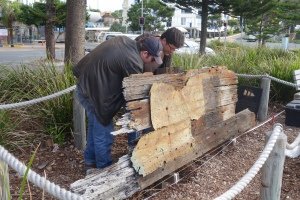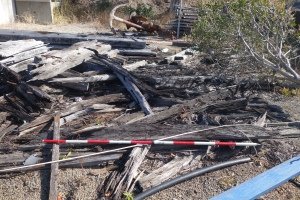Gold Coast Wreck Conservation Project – Maritime Archaeology Field Practicum.
The last day of fieldwork and as usual full of excitement. We woke up to find ourselves on the front page of the Gold Coast Bulletin (Figure 1 and 2).
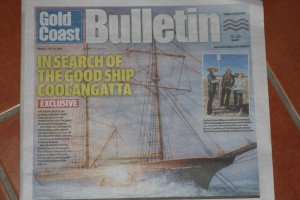
Figure 1: Front page of the Gold Coast Bulletin (Photo Lauren Davison).
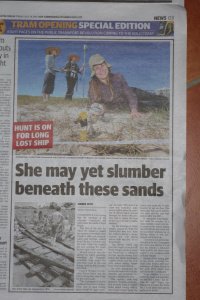
Figure 2: Gold Coast Bulletin (Photo Lauren Davison 2014).
The team then split into two again with a small group heading to the council depot at Tugun and the rest staying at the Tallebudgera Creek Caravan Park to process data, undertake research (Figure 3), and draw out the anchors that had been recorded (Figure 4).
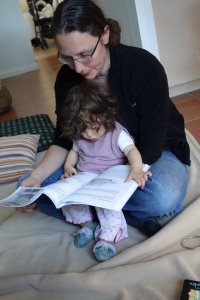
Figure 3: Wendy and Isabelle researching the Heroine (Photo Lauren Davison 2014).

Figure 4: Mark and Dana drawing anchors (Photo Lauren Davison 2014).
At the council yard the work involved scale drawings of frames (Figure 5) and an articulated section including ceiling planking, stringer, frames and fasteners (Figure 6) as well as taking timber samples (Figure 7).

Figure 5: Lauren doing a scale drawing of a frame (Photo Amelia MacArthur Lacey 2014).
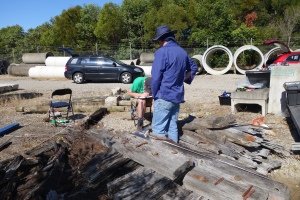
Figure 6: Brad and Trevor recording the articulated section (Photo Lauren Davison 2014).
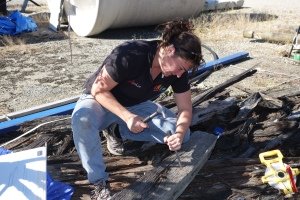
Figure 7: Lauren taking timber samples (Photo Amelia MacArthur Lacey 2014).
The group that had stayed behind at the caravan park came for a visit to the council yards in the afternoon. With the extra hands we were able to turn to articulated section over and have a look on the exterior side. Planking, wale and a small section on sheathing were found on the exterior (Figure 8).

Figure 8: Paddy and Lauren cleaning the exterior surface of the articulated section (Photo Wendy van Duivenvoorde 2014).
To end I would like to thank a wonderful group of people that helped with this project. The Gold Coast City Council, Kevin Rains and Jane Austen; the Department of Environment and Heritage Protection, Paddy Waterson, Amelia MacArthur Lacey, and Toni Massey; the Gold Coast and Hinterland Historical Society, John Burns and Bob Nancarrow, local residents, John Strano, Fred Lang Junior, and John Hogg; Cosmos Archaeology, Cos Coroneos, Dani Wilkinson, and Gina Scheer, Trevor Winton, Mark Polzer, Wendy van Duivenvoorde, baby Isabelle, Brad Guadagnin, Peta Fray, Dana Gilmore and Kate Greenwood.
And finally a last thank you to all the local residents of the Gold Coast who were very helpful and friendly.


